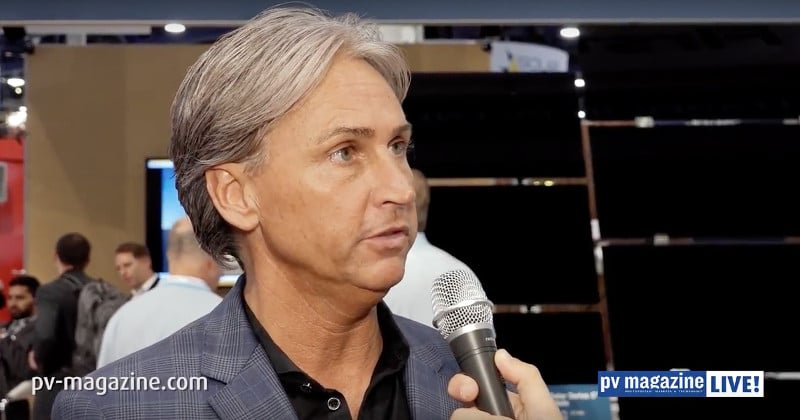First Solar is one of the oldest and largest PV makers in the industry, and is currently beginning what what may be the most significant transition in its history: the switch to its large-format Series 6 modules.
This was the over-riding theme in the company’s Q4 results, which show steady technology progress but difficult financials. First Solar’s revenues fell in half year-over-year to only $480 million, the lowest level in years.
More significantly, the company reported a whopping $729 million in restructuring and asset impairments, which gave it a net loss of $765 million. It is unclear exactly what the breakdown of these impairments are, however during the quarter First Solar shut down four lines at its Ohio factory in preparation for the switch to Series 6, and additionally wrote down its Barilla Project in Texas.
Barilla had been selling power on a merchant basis in the ERCOT market, as the only project known to pv magazine staff to sell power without a contract outside of Latin America. However, this business model gamble does not appear to have been successful, and First Solar blamed falling power prices for a lack of profitability of Barilla.
First Solar had a number of other difficulties during the quarter, including abandoning its Tribal Solar project in California, citing difficulties with the Native American tribe that initially approved the project on its land and then withdrew under new leadership, leading to the scrapping of the PPA. Finally due to timing of project sales First Solar was not able to recognize revenue on a number of U.S. projects which it completed during the quarter.
First Solar cites the timing of project completion as the primary culprit behind its failure to hit its 2016 financial goals, as the company’s sales of $3 billion came in well below its target of $3.9 to $4.1 billion. And while the full year margin of -17% and net loss of $358 million are likewise unfortunate, the company still closed with roughly $2 billion in cash.
On the operating side, things look quite strong. First Solar finished Q4 with a fleet average module efficiency of 16.6%, a 50 basis point improvement over a year prior, with its best line finishing the year at 16.9%. The company notes that this provides a strong basis for its Series 6, which is based on the same technology as its current Series 4.
“We are not reinventing the core technology behind series 6, but increasing the form factor,” noted CEO Mark Widmar on the call. For Series 6 the company is targeting 18% efficiency, based on more available area with its form factor, changes to the electrical design of the module, and improvements through the use of tools.
This change is already underway. During Q4 First Solar shut down its first lines at its factory in the U.S. state of Ohio, and began major tool orders for Series 6 after the beginning of 2017. The company intends to being installing these tools during the third quarter, and plans to begin producing modules in the second quarter of 2018.
The timeline for First Solar’s Malaysia factory represents a slight staggering from Ohio. First Solar expects to stop production at 8 lines in Malaysia during Q2 2017, and begin ordering tools during the same quarter, for a production start during Q3-Q4 of 2018. Between these two factories, this should result in over 2 GW of annualized Series 6 production at both factories by the end of 2018.
Along with this shift to larger-format modules, First Solar is scaling back its development and construction activities to focus on manufacturing. In the future the company expects to build only 1 GW of PV plants annually through its systems business, and dedicate another 2.5 GW of production to module-only sales.
Q4 may have provided the beginning of what that will look like. Systems revenue fell to less than half of First Solar’s earnings during the quarter, down from around 3/4 over the full year 2015. The company appears bullish about its position to move into 2017 and its Series 6 venture, with Chief Financial Officer Alexander Bradley stating that the company is exiting the year “with as strong a balance sheet and cash position as we’ve ever had”.
First Solar’s 2017 guidance is a mixed bag. The company has upped its revenue forecast to $2.8-2.9 billion, perhaps reflecting revenue recognition on projects pushed back, but expects to just about break even with -$40 to $25 million in operating income, and decreased its operating cash flow to $250-350 million.
The biggest bet is on how the transition to Series 6 will proceed. First Solar CEO Widmar appears confident, noting that the company will rely on the experience of its tool suppliers. “In some cases we have been working with these companies for nearly a decade,” notes Widmar. And while he acknowledges that manufacturing risk, including throughput and yield, could affect the Series 6 launch, “The risk of the core technology is low.
This content is protected by copyright and may not be reused. If you want to cooperate with us and would like to reuse some of our content, please contact: editors@pv-magazine.com.









By submitting this form you agree to pv magazine using your data for the purposes of publishing your comment.
Your personal data will only be disclosed or otherwise transmitted to third parties for the purposes of spam filtering or if this is necessary for technical maintenance of the website. Any other transfer to third parties will not take place unless this is justified on the basis of applicable data protection regulations or if pv magazine is legally obliged to do so.
You may revoke this consent at any time with effect for the future, in which case your personal data will be deleted immediately. Otherwise, your data will be deleted if pv magazine has processed your request or the purpose of data storage is fulfilled.
Further information on data privacy can be found in our Data Protection Policy.